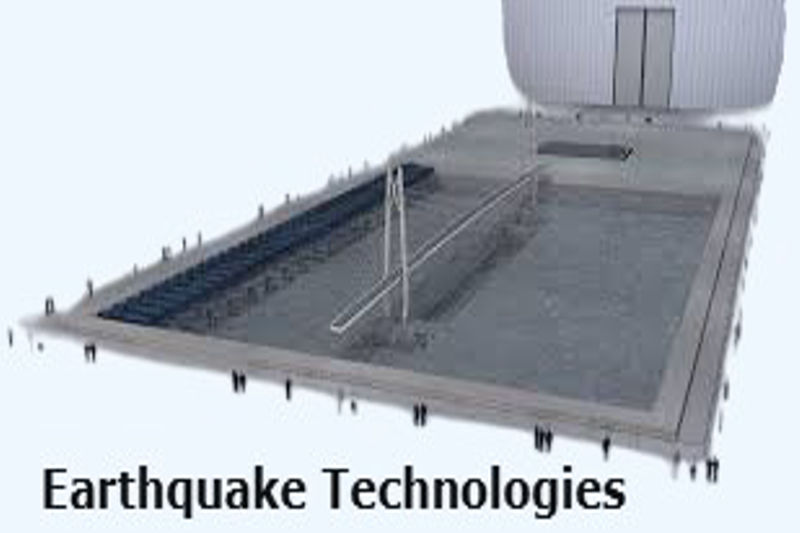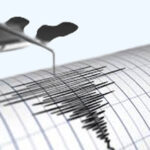One of the most destructive natural disasters, earthquakes may cause enormous harm in a matter of seconds. China, located in one of the world’s most seismically active regions, has experienced some of history’s deadliest earthquakes, including the 2008 Sichuan earthquake (magnitude 8.0), which killed over 87,000 people.
In response, China has invested heavily in earthquake prediction, early warning systems, and disaster resistant infrastructure. But just how advanced are China’s earthquake technologies? This article explores China’s innovations in seismic monitoring, early warning systems, AI driven prediction models, and earthquake resistant construction.
1. China’s Earthquake Early Warning System (EEWS)
China has developed one of the world’s most sophisticated Earthquake Early Warning Systems (EEWS), designed to provide critical seconds of alert before shaking begins.
How China’s EEWS Works
Seismic sensors detect primary waves (Pwaves), which travel faster than destructive secondary waves (Swaves).
Real time data processing estimates the earthquake’s location, magnitude, and expected impact.
Instant alerts are sent via smart phones, TV, radio, and public sirens.
ICL Network – A Leading Example
The Institute of Care Life (ICL) in Chengdu developed a key early warning system that provided 26 seconds of warning before the 2013 Ya’an earthquake (magnitude 7.0). This system has since expanded across China, particularly in high risk provinces like Sichuan and Yunnan.
Comparison with Other Countries:
Japan’s EEWS is more established, providing up to 60 seconds of warning.
China’s system is rapidly improving, with plans to cover 90% of atrisk areas by 2025.
2. Advanced Seismic Monitoring Networks
China operates one of the largest seismic monitoring networks in the world, managed by the China Earthquake Administration (CEA).
Key Features of China’s Monitoring System
Over 15,000 seismic stations nationwide, including underground and ocean based sensors.
Satellite based monitoring helps track crustal movements.
Integration with AI improves real time data analysis.
The China Seismic Experimental Site (CSES)
Located in Sichuan, this facility conducts large scale earthquake simulations to improve prediction models and building safety standards.
3. Earthquake Resistant Construction Technologies
China has implemented strict building codes in earthquake prone regions, incorporating cutting edge engineering solutions.
Innovations in Earthquake Resistant Buildings
Base Isolation Systems: Buildings are placed on shock absorbers to reduce shaking impact.
Damping Systems: Hydraulic dampers absorb seismic energy in skyscrapers.
Smart Materials: Shape memory alloys and self-healing concrete increase durability.
Case Study: The Shanghai Tower
A 128-story skyscraper built to withstand earthquakes of magnitude 8.0.
employs a 1,000-ton pendulum as a tuned mass damper to prevent swaying.
Despite these advancements, older buildings in rural areas remain vulnerable, highlighting the need for nationwide retrofitting programs.
4. AI and Big Data in Earthquake Prediction
China is leveraging artificial intelligence (AI) and big data to enhance earthquake forecasting.
How AI is Used in Earthquake Research
Machine learning models analyze historical seismic data to predict future quakes.
Deep learning algorithms detect subtle ground deformations before major earthquakes.
Satellite and drone imagery help assess fault line movements.
Success Stories
In 2021, Chinese researchers used AI to predict a magnitude 5.3 earthquake in Yunnan with 70% accuracy.
The Lanzhou Institute of Seismology is developing a “smart earthquake forecasting” system using real time data.
Limitations:
Earthquake prediction remains unreliable due to complex geological factors.
AI can improve early warnings but cannot yet precisely forecast quakes days in advance.
5. Public Awareness and Emergency Response
China has prioritized emergency exercises and public education since technology alone is insufficient.
Key Initiatives
National Earthquake Response Drill (May 12): Annual drills involving millions of citizens.
Mobile Alerts: Government emergency messages sent via WeChat and SMS.
Community Preparedness Programs: Training for schools, hospitals, and businesses.
6. Challenges and Future Developments
Despite progress, China faces several challenges:
Rural areas lack advanced warning systems compared to cities.
Aging infrastructure in some regions increases risks.
False alarms have the potential to erode public confidence in early warnings.
Future Technologies in Development
Quantum Sensors: For ultra precise earthquake detection.
Block chain for Disaster Response: Secure data sharing between agencies.
Automatic Shutdown Systems: Stopping gas and electricity during quakes to prevent fires.
Conclusion: Is China a Global Leader in Earthquake Technology?
China has made remarkable progress in earthquake technologies, particularly in early warning systems, AI driven prediction, and resilient infrastructure. While Japan and the U.S. have more mature systems, China is rapidly closing the gap with innovations like the ICL early warning network and AI powered seismic analysis.
However, full nationwide coverage and public preparedness remain ongoing challenges. With continued investment, China could become the global leader in earthquake disaster prevention within the next decade.
“Does China have developed earthquake technologies?”
“China earthquake early warning system”
“AI earthquake prediction in China”
“Earthquake resistant buildings in China”
“China Seismic Experimental Site”
“ICL earthquake warning network”


